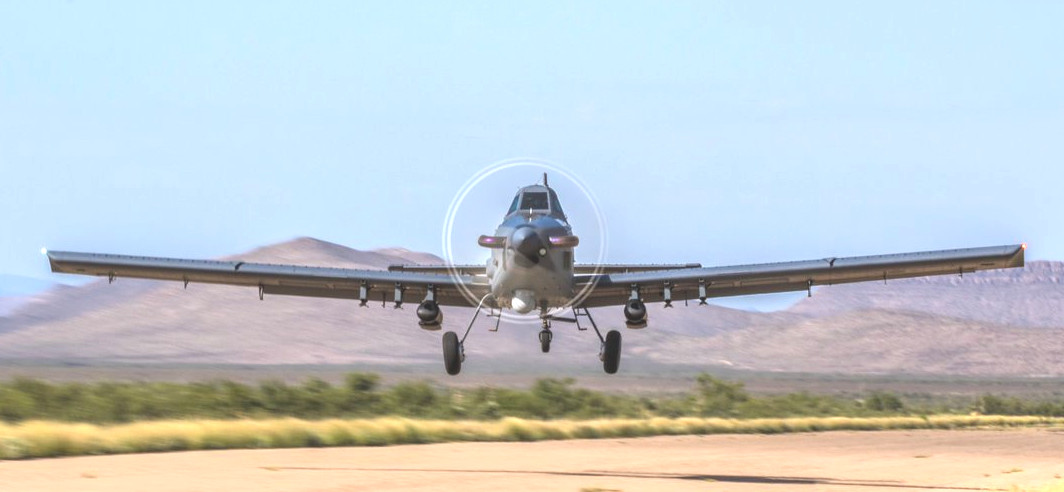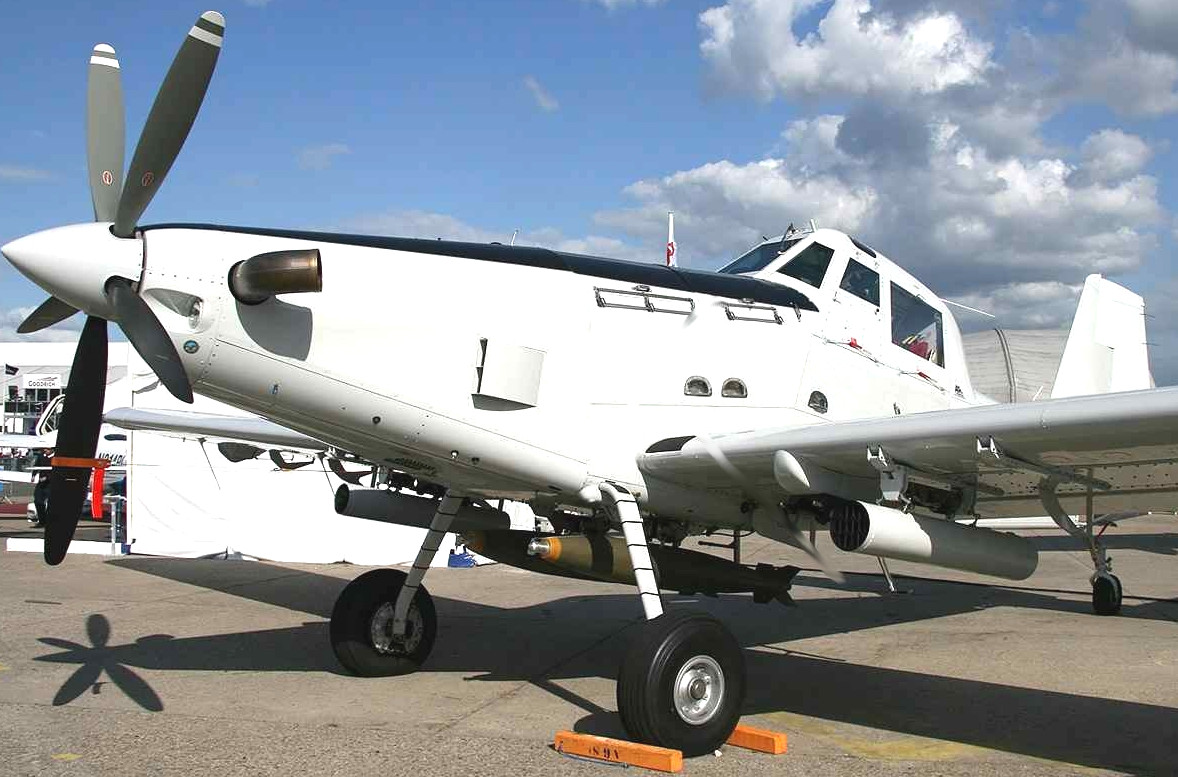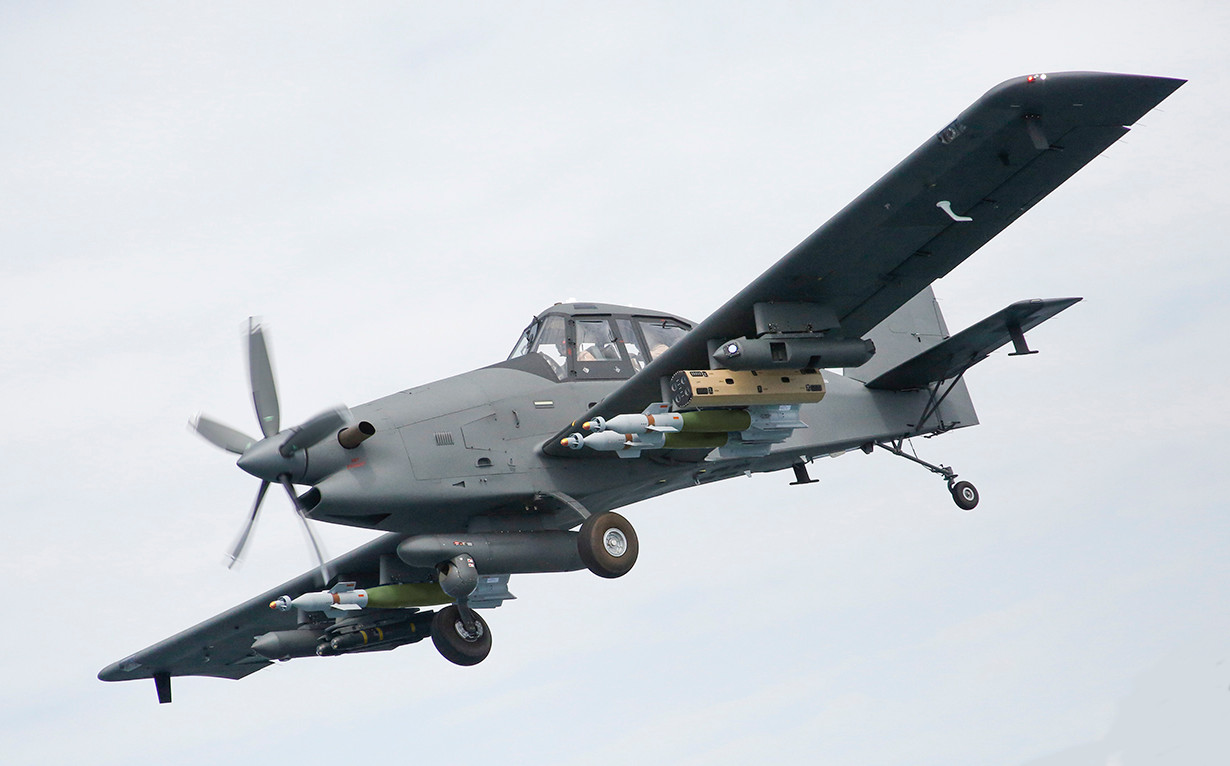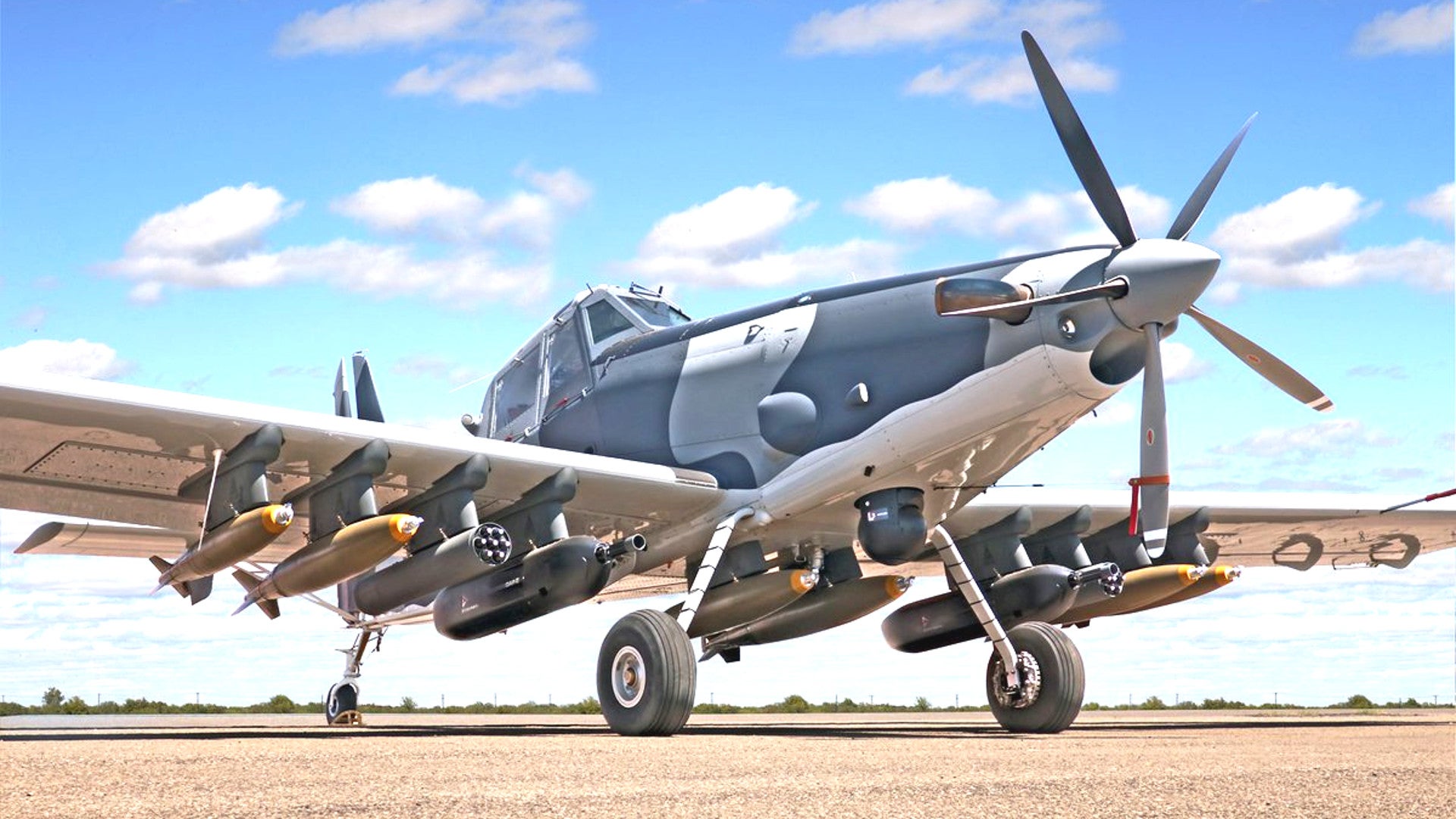We at The War Zone have already written
a lot about what the U.S. Air Force may or may not hope to gain from its light attack aircraft experiment, or OA-X, and whether it is truly invested in the idea. Now it appears the service may be courting a separate controversy by inviting a team from L-3 and Air Tractor, a decision their competitor IOMAX has criticized, provoking some peculiar drama in the press and on social media.
On Aug. 1, 2017, the Twitter account associated with L-3 and Air Tractor’s Longsword light attack plane said that a complaint from IOMAX “sounds like something a recently vanquished politician would say.” This was in direct response to an interview IOMAX’s President and CEO Ron Howard had given in to Aviation Week. This came in the middle of two other Tweets with similar sentiments.
The spat had started on July 31, 2017, the same day the OA-X assessment began at Holloman Air Force Base in New Mexico, when L-3 and Air Tractor announced they would be sending their Longsword plane to take part in the experiment. Before then, Sierra Nevada Corporation and Embraer, with their A-29 Super Tucano light attacker, and Textron, with both the AT-6 Wolverine and Scorpion aircraft, were the only participants to confirm the USAF a cleared them to take part in the tests.
“We are proud of the Longsword and the opportunity to participate in OA-X,” Jim Hirsch, president of Air Tractor, said in a press release. “We are looking forward to flying at Holloman AFB and showcasing our capabilities to the Air Force and to our partner nations.”

L-3 and Air Tractor unveiled the aircraft earlier in 2017. Marketed variously as the AT-802L, OA-8, and OA-802, the aircraft is a heavily modified Air Tractor AT-802 crop duster intended for light attack and aerial surveillance duties.
The plane is a derivative of Air Tractor’s AT-802U light attack demonstrator, which debuted in 2008, and L-3’s own electro-optical sensor package for the aircraft. In 2014, the U.S. Air Force hired L-3 to install this system, centered on a turreted electro-optical and infrared video camera system, onto four AT-802s initially bound for Yemen. When that country’s government collapsed in February 2015, the United States diverted those planes to Jordan.
In addition to the sensor turret, the Longsword configuration has a battle management system and provisions for up to 11 hard points, four under each wing and as many as three under the fuselage, allowing it to carry a mix of precision guided bombs and missiles, rockets, dumb bombs, and gun pods. According to L-3 and Air Tractor, the aircraft has enough fuel for up to 10 hours of flight time, which equals to a combat radius of 400 miles plus up to six hours loitering over the target area.
Based on what little we know of the OA-X’s structure and goals, this plane sounds like an obvious entrant. For more than two decades, the idea of converting agricultural planes into counterinsurgency tools has steadily gained traction and countries like the United Arab Emirates and Jordan have already put similar aircraft into action.

But L-3 and Air Tractor’s chief rival in this market, a small North Carolina-based company called IOMAX, who is not taking part in the trials at Holloman, publicly suggested the Air Force had made a special exception to let the OA-802 into the experiments. “This is a perfect example of the Air Force changing its requirements,” IOMAX’s head Howard told Aviation Week.
One of the key issues is the Air Force’s apparent desire for the light attack aircraft to have an ejection seat. IOMAX says its original aircraft, also based on the AT-802, was barred from the service’s earlier Light Air Support (LAS) program because it lacked this feature. SNC and Embraer ultimately won that competition and the U.S. military has since facilitated the sale of its A-29 to Afghanistan and Lebanon.
According to IOMAX, the Air Force revived the ejection seat requirement for OA-X. This disqualified the company’s new Archangel, which uses the Thursh 710 crop duster as its base airframe.

“We’ve got an escape capability inside the cockpit – a more efficient egress solution,” Howard explained to FlightGlobal. “It’s not an ejection seat.”
His complaint is that the OA-802 doesn’t have an ejection seat, either. The implication is that the Air Force removed this stipulation at the last moment after IOMAX had given up trying to get into the competition.
Even before responding to these criticisms, the L-3 and Air Tractor team’s Twitter account had been keeping an eye out for stories related to OA-X, and actively promoting its participation. The other response to IOMAX specifically were as pointed as the “vanquished politician” remark
“USAF set a high bar for Military Flight Release in OA-X,” another declared. “One has to compete to win…Iomax [sic] isn’t.”
“Competing is hard work,” a third read. “Throwing mud…not so much.”
This harsh language may seem like it came out of nowhere. However, this isn’t the first time IOMAX has publicly criticized the Air Force’s decision to work with L-3 and Air Tractor.
In January 2017, the Defense Security Cooperation Agency, the Pentagon’s top weapons broker, announced plans to help Kenya purchase a fleet of AT-802L aircraft and associated equipment, spare parts, and support services. The total deal was worth approximately $418 million.
IOMAX, as well as it supporters in Congress, subsequently argued that the Air Force, and in particular the 645th Aeronautical Systems Group, a special projects office better known as Big Safari, had deliberately steered the contract to L-3 and Air Tractor. Big Safari has worked extensively with L-3 in the past on a number of projects, including the aforementioned delivery of modified AT-802s to Jordan.

“They were given a raw deal,” Representative Ted Budd, a North Carolina Republican, told Fox News in March 2017. “We want to know why IOMAX was not considered.”
These comments sparked questions in Kenya about whether the country’s government had been duped into overpaying for the aircraft. L-3 and Air Tractor denied there had been any collusion or misrepresentation of their product in that contract.
Separately, the Air Force and Big Safari have weathered similar criticism for their decision to let L-3 decide what airframe to use as the base for its replacement for the aging EC-130H Compass Call jamming aircraft. That provoked formal protests from Bombardier and Boeing, both of whom argue that L-3 will be inclined to unfairly choose Gulfstream to supply the planes.
It’s still too soon to say whether or not this dispute will have any impact on the OA-X experiment or its outcome. However, depending on the results, it could easily add another layer of complexity to any final decision the service makes about whether or not to buy a fleet of light attack aircraft.
Contact the author: joe@thedrive.com
